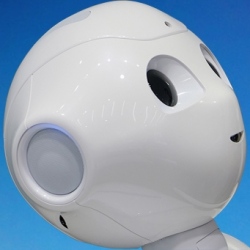
One of the great benefits of technological innovations is the cost reduction of delivering world-class medical support to developing communities. However, as technology advances, it also brings about disruption. This is according to Anton Musgrave, futurist, referring to the benefits and disadvantages of AI systems.
Musgrave says the ever-evolving AI systems in the global health industry will assist in creating future democratisation of healthcare. However, he warns these innovations will replace some jobs. He gave an example of IBM Watson’s supercomputer, which combines artificial intelligence and sophisticated analytical software to give a 94.6% accurate medical diagnosis in only 12 seconds.
"In the next five years, radiographers around the world will be unemployable because they will be replaced by this cognitive computing system. Such technological innovations not only reinforce change but they also transform the future of industries, whether we like it or not," he explains.
He discussed Medicine’s Electronic Medical Assistant software, which was designed with data technology that handles the Physician Quality Reporting System program. This system can remember the specific requirements of each provider through an adaptive learning engine and physicians are able to actively select commonly used diagnoses, prescriptions and consent forms.
"Some professionals will become redundant because one challenge facing most businesses is staying relevant in this technology-driven world we live in. As expected, with new innovation, the old players and old solutions are always disrupted," he asserts.
Musgrave believes providing health solutions to emerging communities will benefit everyone in the long term. However, he says some disadvantages might be that existing solutions will be radically overvalued due to slow acceptance of incoming technology.
"Incumbents don’t like change and might seek to slow the change process down to the detriment of the communities that need new solutions," he notes. He says another new frontier for healthcare is the 3D printing of body parts technology which creates tailor-made robotic limbs.
Almost three weeks ago, South African surgeon urologist Dr Marius Conradie became the first surgeon in the world to use Da Vinci robotic-assisted technology to perform a partial nephrectomy. This system, which was used on a 29-year-old woman at the Netcare Waterfall City Hospital, features a magnified 3D high-definition vision and tiny wristed instruments that bend better than the human hand.
"Up until then, urologists had been using the Da Vinci to operate on men, mainly for the surgical removal of the prostate gland," says Conradie. Anticipating future innovations, Musgrave says we should expect to see sensors embedded in key body organs with early warning systems that are able to detect deteriorating health levels.
He advises that we either catch up with technology or get left behind. "We need to learn to embrace these inventions because we cannot compete with technology. These machines are faster, smarter and more innovative than we are."
